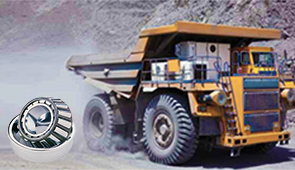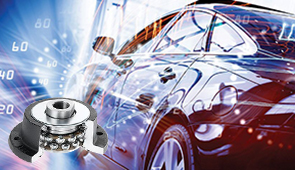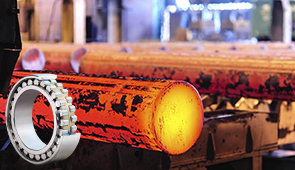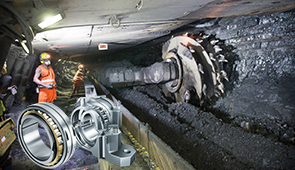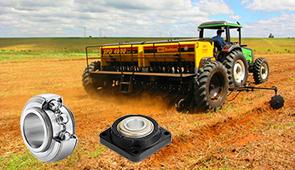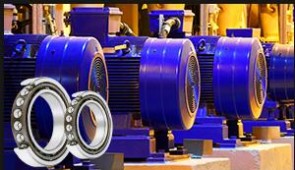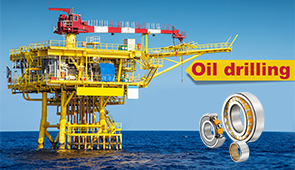Warning Signs: Spotting the First Signs of Bearing Failure
Bearings are a critical component in countless mechanical systems, enabling smooth rotation and movement while supporting heavy loads. However, even the most robust bearings are susceptible to wear and failure over time, which can lead to costly downtime and significant damage to machinery if not addressed promptly. Recognizing the early warning signs of bearing failure is essential for minimizing risks, ensuring operational efficiency, and avoiding unexpected breakdowns. This article will guide you through the key indicators to watch for, the underlying causes of these issues, and proactive measures to extend the lifespan of your bearings. Whether you’re a seasoned engineer or a maintenance professional, understanding these signs can be the difference between seamless operation and costly repairs.
What Are the First Signs of Bearing Failure?
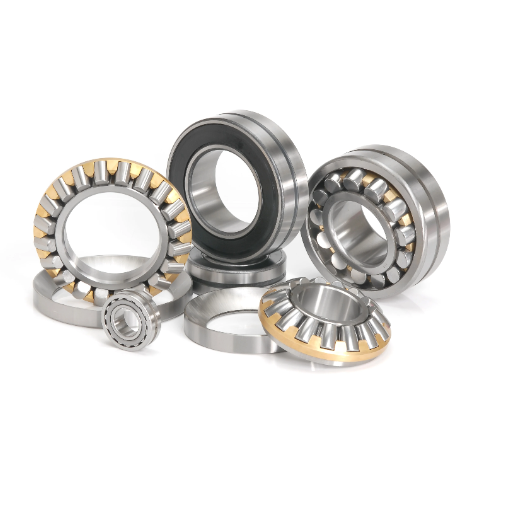
How to Recognise Signs of Bearing Failure
Identifying bearing failures in their infancy is vital for maintaining equipment integrity and mitigating any holistic losses. The foremost sign and the easiest one to detect is noise. All deteriorating bearings make some kind of grinding, squealing, or clicking because of increased friction or misalignment. They can be faint at times, but provided the machinery is closely monitored, such operations should alert one to the problem well before it arises.
Another sign that can help detect bearing failure is an elevated temperature around the bearing seat. About the investment, there are many reasons why bearings tend to overheat, but for the sake of this discussion, let us try to simplify it. When an asset lacks lubrication, gets contaminated, or the bearing experiences some undue pressure, overheating is bound to occur. Thermal imaging devices and temperature sensors configured to monitor operating temperatures can be used to nip the problem right before it becomes an issue. Any bearing running too hot will require analysis very shortly.
Vibration analysis helps in determining whether any particular bearing has passed its useful life. Since I have drones for everything, let’s continue with the bold some more. Vibration monitoring equipment provides the precision data required. The essence of this type of equipment is to analyze any form of irregular vibration while in motion, as previously mentioned. In such a scenario, it becomes far too easy to do away with significant mechanical failure. Prompt focus on such areas allows the asset to remain efficient throughout its operation while saving the entity from unplanned downtimes and being subjected to rigorous mechanical failure.
Common Warning Signs in Bearings
Bearings enable the rotation of components in machinery and help in the smooth operation of motors and generators. From overheating to misalignment, there are plenty of problems a bearing can face. Here are the most common:
- Easy Overheating: A bearing running too hot, or getting too much heat, is known as overheating. That problem can come from improper lubrication, too much load, or mounting issues. Using infrared thermography to check for overheating can give accurate results.
- Strange Noise: Persistent deterioration in a lake of noise can also change the efficiency of your device. A grinding noise means there is too much friction or misalignment. A squeaming sound means a part is rubbing against another one, while clicking indicates added force being applied.
- Disbalance: A constant rotation leads to crazily shaped objects sticking to a spinning component or beams throwing missiles. Changes in your device’s efficiency can mean that some parts of it are rotating at a different rate and have different acceleration capabilities.. This means there is a risk factor added to everything coming apart.
- Lubrication Problems: If a bearing is not spinning as it’s supposed to with low support, something is retaining it in its position. When a lubricant starts turning cloudy or even wor,se caking on, it stops being effective.
- Vision Problems: Something as simple as looking at a fulfilled screw can lead to cracks appearing. That’s due to dirt getting onto it, moisture particles moving into the mechanism, both get along with using too much force can initiate damage formation.
- Excessive Shaft Play: Radial or axial shaft play beyond set limits demonstrates bearing failure. Determining if replacement is necessary can be done with the help of specialized construction measurement devices that accurately measure the scope of dimensional changes.
Responding to these warning signals ahead of time necessitates strict condition monitoring policies. Implementing predictive maintenance tools like vibration measurement, thermographic cameras, and lubricant analysis systems increases accuracy of the diagnostics and intervention, thus guaranteeing proper functionality and reliability of the equipment.
Early Vibration Indicators of Bearing Damage
Finding bearing damage and defects through vibration analysis helps in precise diagnosis, which is critical in avoiding further mechanical damage. A bearing’s vibration usually increases at specific frequency ranges. These ranges include fundamental Train Frequency (FTF), Ball Pass Frequency (BPF), Ball Spin Frequency (BSF), and Ball Pass Frequency of Outer (BPFO). Surface misalignment and defects are usually accompanied by these symptoms.
Advanced systems nowadays utilize Fast Fourier Transform (FFT) as it allows accurate detection of defined frequencies, making fault identification simpler, thus enabling easier monitoring of the condition. Data from accelerometers, which measure vibrations and velocity sensors, assist in accurately determining RMS levels and PTP (Peak-To-Peak) values.
The incorporation of machine learning algorithms into vibration analysis systems improves prediction accuracy by detecting even the smallest deviations from normal operating levels. Such systems are capable of analyzing large quantities of both historical and real-time vibration data, helping to prevent bearing failures before more severe damage occurs.
How Does Excessive Noise Indicate Bearing Problems?
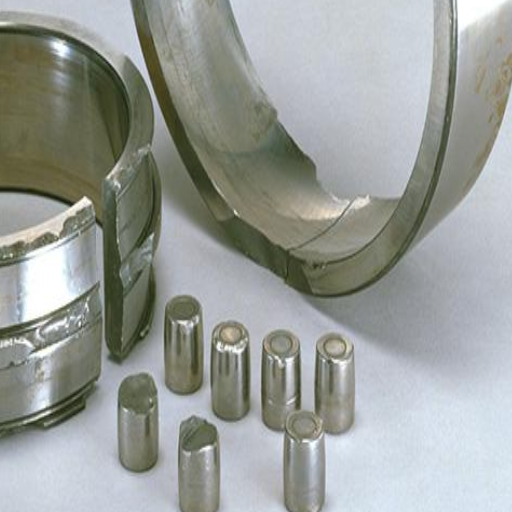
Identifying Noise During Operation
Noise is one of the critical indicators of bearing deterioration during operation. At times, noise acts as a precursor warning signal, indicative of wear and tear, contamination, or insufficient lubrication. The rolling element frequencies must display low sweeping operational noise amplitude and also should not have any major irregularities in the noise spectrum. Construction of noise of discrete or greater than normal amplitude should be accompanied by the presence of defects such as pitted bearing surfaces or misalignment. Highly accurate and precise tools focus on identifying irregular patterns to assist in damage mitigation before it incurs complicated costs.
Modern diagnostic systems reliant on machines incorporate a blend of sound level measuring devices, vibration sensors, and modulus for noise emission analysis to tackle noise-bearing issues. The implementation or integration of machine learning transforms these systems to be capable of distinguishing between dormant and progressive agility. These changes centralize target achievement on reducing false alerts while amplifying dependability, precision, and overall reliability of assessment during conditions of graceful operational variations.
Moreover, continuous monitoring of noise levels allows for trend assessment, which aids in predicting maintenance activities regarding noise-bearing equipment. Providing maintenance teams with these insights lets them intervene at the most optimal time, thus improving scheduled uptime and decreasing operational costs related to unplanned downtimes. This systematic approach to noise monitoring enables organizations to enhance operational efficiency while extending the lifespan of their machinery.
Understanding Grinding Noises and Squeals
Grinding noises and squeals indicate that a machine has a problem, which, if unresolved, could cause further damage. The root cause could be insufficient lubrication, worn-out bearings, mechanical overheating, or misaligned parts. These issues result in generating friction, which wears out machinery parts faster than normal. The life span of a machine is heavily compromised because of this. Other problems, such as belt slippage, underscore the need to meticulously investigate the noise source methodically to ensure the functionality and safety of the device.
Tech advances in recent years have greatly enhanced the effectiveness of tools and techniques used for detailed analysis of the source of grinding noises and squeals. Using vibration sensors and monitoring of acoustic emissions, maintenance can now focus on specific problem areas in large systems. Normal Operational Sound Spectrum (NOSS) analysis can detect anomalies that spectrum analysis detects and make a prognosis about its severity and urgency, therefore leading to prompt action being taken. Real-time monitoring of noise level alongside machine learning pattern recognition algorithms allows even more enhancement to be made to modern predictive maintenance platforms. These advances enable a proactive approach to sustain machinery, optimizing noise limit boundaries for unplanned interruptions.
Using data to evaluate noise helps evaluate the health of machinery, which in turn aids in Managing Business Concerns like reducing downtime and Operational Costs. With the sophisticated metrics produced from noise analysis systems, companies can forecast maintenance stops and avert more significant failures. This not only optimizes operating life but also makes employees safe by dealing with risks before they turn hazardous.
Causes of Noisy Bearings
Bearings that produce unusual sounds are often symptoms of more problematic underlying systems. These issues, if neglected, will lead to a complete system breakdown. Among the leading issues that cause bearings to produce noise is the presence of too much, too little, or dirty lubricant. Aural or mechanical noise is usually the result of increased contact or bombardment between bearing surfaces. Moreover, damage such as pitting, corrosion, or wear of the rolling components often leads to unique or irregular motion, which in turn forms unique sound patterns.
Misalignment leads to inefficient noise suppression solutions. Pertinent to the mounting techniques, non-standard fitting tools enhance the undesired effects. With the inappropriate assembly of shafts and housings, unnecessary forces are directed toward the elements. The same attributes increase vibration and noise as well. Exceeding speed and load which is commonly accepted also leads to issues in defined bounds may further worsen the situation on the bearings.
Operating temperatures aren’t perfect either. The direct relationship to the bearing support further worsens the operating condition. Detrimental materials like dust and debris create an immediate threat by invading the component. Abrasive levels can damage the protective layer, further weakening the system. The strategic overlap aided through failure analysis sheds great light on these primary concerns when offered advanced tools to mitigate and navigate through.
Why Do Bearings Fail Due to Lack of Lubrication?

Importance of Proper Lubrication
Proper lubrication is critical for achieving the desired bearing efficiency and lifespan. Lubrication decreases friction between the rolling elements, raceways, and all other surfaces that rub against each other, hence minimizing wear and damage associated with metal-to-metal contact. In addition, lubricants provide a protective barrier from harmful particles like dust, water, and corrosive materials that can invade the bearing assembly and hinder smooth operation.
Lack of or worsened lubrication causes greater operating temperatures, increased wear, and risk of fatigue or pitting on surfaces. Research shows that a considerable portion of bearings’ failures, estimated to surpass 40%, are directly associated with problems concerning lubrication, such as deficient application of lubricant, wrong type of lubricant, or contamination.
When determining the right lubricant for a bearing system, numerous factors bearing load, speed, and running temperature, alongside the specific operating conditions, should be taken into account. For example, high bearing speeds will usually increase the frictional heat, leading to the need for lower viscosity oils or synthetic lubricants, while low rotational speeds may enable the use of high viscosity greases with better performance.
Engineers can now monitor lubrication conditions in real time and adjust to changing operating environments because of advanced failure analysis techniques and predictive maintenance technologies. Adapting such technologies helps industries reduce risks and unscheduled downtime because of lubrication shortages, and optimize bearing performance.
Impact of Lack of Lubrication on Bearing Life
Proper lubrication plays a crucial role in ensuring that friction does not bring metal to metal contact. While performing essential bearing functions, rolling elements interact with raceways. Because rough contact is considerably avoided in the case of adequate lubrication, bearings without lubrication have negative performance impacts. Friction causes wear, generation of heat, along with damage to the surface, which wastes mechanisms, and could lead to catastrophic failures.
In some industrial research, fault lubrication is a major reason for up to 50% of bearing breakdowns followed by failures. Change in pressure can change the rotation of the bearing, which greatly limits cross section area. Lack of lubrication exchange lessens the filtering process that results in meshing of surfaces interacting with one another. Structural changes to bearing materials can lead to microcracks or extensive deformation.
Checking temperature, vibration level, and acoustical emissions guarantees to provide fraying solutions that, if neglected, lead to detrimental bearing breakdown. Adequate monitoring allows us to customize the bearing to align with how the bearing is intended to be used for unprecedented reliability, along with a reduction in the need for maintenance.
How to Replace the Bearing with Lubrication Issues
Replacing a bearing with lubrication issues entails a distinct sequence of operations to ensure the bearing is fitted properly, functions efficiently, and does not present any further concerns. Every procedure must be performed with proper attention to safety requirements and the right procedures to reduce risks and strengthen system reliability. Here is a complete instructional list for you:
- Set Tools and Equipment as well Prepare the Workplace: To begin with, the machine should be unmounted and powered down. Cleaning around the equipment prevents foreign substances from contaminating the gear during a shift. Capture all planned tools and parts, for example, the proper bearing and lubricant, as well as equipment meant for removal or installation of bearings.
- Locating and Eliminating the Bearing Flaw: Fixing the equipment as well as spotting the failure is the first step. Identification is key for isolating troublesome boundaries. Utilize the right techniques alongside the proper tools like a pulling tool or press machinery to navigate the shaft or housing in order to take out the bearing. Removing the worn or strained bearing seamlessly needs caution so as not to destruct components in excess.
- Inspect and clean the system components: Carefully inspect the bearing and housing for any sign of wear and tear, corrosion, or mechanical damage. Use a gentle cleaning solution that will take off grease, contamination, and debris without harming the surface of the part being cleaned. Eliminate defects found that, if unattended, would compromise installation and sealing.
- Select and apply the right lubrication: Before the installation of the ceramic ball bearing, determine the specification relating to lubrication to be used, which is recommended by the manufacturer. Insufficient and excess lubrication will lead to bearing failure sooner than expected. If pre-lubrication is needed, do so because it reduces friction during initial operation.
- Install the new bearing: Guiding the bearing into position with steps A and B will allow merging with the shaft and housing while aligned with the casing guiding sleeve. If applicable, guide funnel or installation flared collar should be used in a manner where sufficient force might be used on rolling elements moving parts. The bearing must be so seated that misalignment which has adverse effects on performance does not occur.
- Reassemble and test the system: After fitting the bearing to its operating position, install all parts in the right order and tighten them using the accurate settings of torque given by the company. The machinery is to be tested after being put back together under set conditions to guarantee that it operates as expected.
By following these procedures along with the manufacturer’s instructions, technicians will effectively resolve lubrication-related bearing problems which will extend the bearing’s lifespan.
How Does Contamination Lead to Bearing Failure?
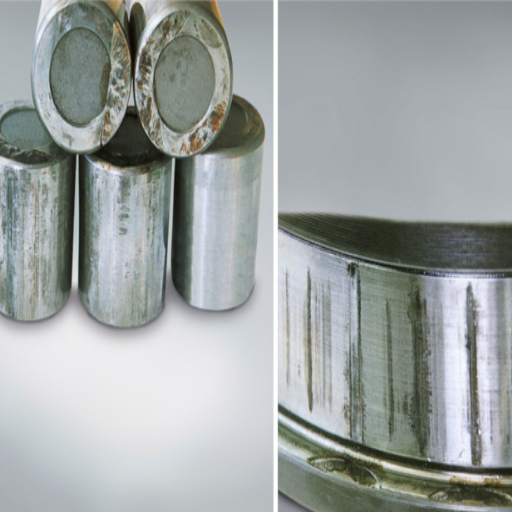
Identifying Contamination in Bearings
Contamination is one of the primary contributors to the overly-early failure of a bearing, which can stem from different sources, such as particles, moisture, and chemicals. Particulate matter, dirt, dust, and even metal shavings from previous assembly and maintenance serve as commonly known contaminants, alongside water and corrosive substances from an operational environment. In turn, these impurities greatly undermine the lubrication quality, which results in enhanced friction, pitting, and wearing out of the bearing surfaces at a significantly higher rate.
Numerous techniques can be used to determine contamination in bearings. Particles or debris in lubricant samples can be assessed with techniques such as ferrography and microscopy. Besides particle inspection, vibration analysis proves to be extremely crucial since specific frequency patterns can directly depict damage caused by contamination. Using particle counters alongside spectroscopic evaluation to monitor lubricant conditions regularly can spot the early stages of contamination before further damage becomes irreversible.
Apart from these protective actions, proactive management of contamination entails stringent maintenance protocols, as well as the use of sealed bearings or protective coverings. To enhance the service life of the bearings in machinery along with operational productivity, proper filtration systems for lubricants alongside scheduled inspections are crucial.
Preventing Bearing Damage from Contamination
The process of maintaining contamination control in industrial machinery is both proactive as well as sophisticated in nature. This includes recently developed sealing techniques like contactless and labyrinth seals which prevent the entry of dust, water and other detrimental contaminants. These techniques work well in high-speed applications where traditional sealing mechanisms tend to fail due to wear and tear.
Advanced filtration units that clear lubricants of even microscopic debris have become vital in preventing abrasive damage to bearings. High beta ratio and fine micron filters are suggested for critical applications with stringent oil cleanliness requirements.
The real-time detection of problems is possible using non-contact diagnostic devices such as particle counters and contamination monitoring sensors. Predictive maintenance aids like vibration and acoustic emission monitoring comprise additional specialized components that, when paired with non-contact diagnostics, enable operators to detect potential contamination-related wear before larger, complex mechanical failures arise.
Comprehensive training programs for operators and technicians enforce clean installation and maintenance procedures of bearings, enhancing proper handling protocols. Operative procedures for cleanrooms, the donning of lint-free gloves, and depositing anti-contamination coatings on important parts also improve bearing life and, subsequently, equipment dependability and functionality.
What Role Does Alignment Play in Bearing Health?
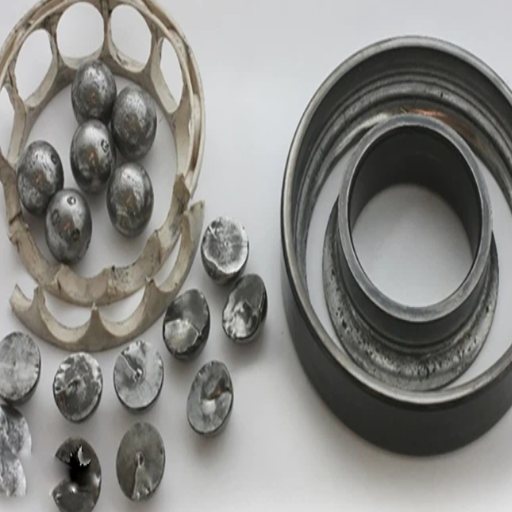
Effects of Poor Alignment on Bearings
Inadequate alignment of bearings will noticeably worsen bearing life as well as industrial productivity and efficiency. Misalignment occurs when either the tar shaft centerlines or the housings are not precisely equidistant, which results in imbalanced bearing loads, yielding faulty operational performance. This misalignment creates stress pockets in bearings that are sharper than expected, leading to bearing components that wear out easily and become fatigued much quicker than they are supposed to. Eventually, this wear results in excessive friction, which increases thermal energy, and unrivaled breakdown of the lubrication film that is crucial for smoothing contact between metals.
More than half of the service life of bearings depends on alignment, with an average of a 50% reduction in lifetime owing to severe misalignment. Furthermore, increased vibration is a common ailment of improper alignment pistons while enhanced movement adds to noise and hastens erosion of the seals and even the housings. If misalignment goes unnoticed bearing equipment fail catastrophically.
Vibration analysis and laser tools, used to streamline the efficiency of heavy machinery, enable the identification and fixing of alignment offsets using advanced diagnostic procedures. These systems enable accurate measurements and capture relevant data so that all parts of a machine work together seamlessly while optimizing bearing functionality and extending machine life. For industries that are heavily reliant on precision machinery, rapid rectification of alignment issues is the fastest way to cut lost production hours and avoid immense repair costs.
Checking Alignment to Prevent Bearing Failure
Maintaining proper alignment is critical to prevent premature failure of bearings as well as maximize efficiency. When any components become misaligned, there is the potential for uneven distribution of loads placed on bearings, which can cause abnormal or uneven wear in addition to operating temperature increases. Degradation, in addition to the chance of catastrophic failure, will worsen faster. With regular alignment checks using tools such as laser alignment systems and dial indicators, the placement of components can be done to mitigate stress placed on bearings and other machinery.
Bearing failure leads to the expression of financial impact alignment monitoring due to the costs involved. Regardless of the industry, structurally unsound machinery leads to unplanned downtime in the factory, energy production industry, and even in transportation, which negatively impacts business overall. Loss of functionality impacts operational repair capability by causing severe damage to infrastructure, which leads to forward-looking losses. Routine maintenance alterations that utilize advanced system joining methods lead to the minimization of bearing damage, increasing overall machinery longevity.
Sensor-equipped devices with data analysis capabilities provide real-time data, allowing maintenance crews to detect small misalignments that would be missed otherwise. The combination of these strategies, along with periodic service checks to surpass machine performance, ensures that safety and operational standards are met, precision machinery reliability is fortified, and safety standards are adhered to.
Frequently Asked Questions (FAQs)
Q: What are the first signs of bearing failure in machinery?
A: The first signs of bearing failure often include excessive vibration and noise, such as a hum, which are caused by unevenly worn components or misalignment. Monitoring these signs can help identify potential issues early.
Q: How does operating temperature affect ball bearings?
A: An increase in operating temperature can indicate potential bearing failure. Excessive heat generation may result from increased friction or a lack of relubrication, which can lead to further damage to the bearing components.
Q: What role does the cage play in bearing failure?
A: The cage in a bearing maintains the separation between rolling elements and helps distribute them evenly around the raceway. A damaged or misaligned cage can cause the rolling elements to bounce around, leading to abrasion and further failure.
Q: How can ultrasonic technology be used to detect bearing failure?
A: Ultrasonic technology can detect high-frequency sound waves emitted by failing bearings, which are often undetectable by the human ear. This method is cost-effective for identifying early-stage failures before they cause significant damage.
Q: What are the four stages of bearing failure?
A: Bearing failure can be categorized into four stages: Stage 1 involves early signs like minor noise and vibration; Stage 2 includes noticeable temperature increase and wear; Stage 3 is marked by severe noise and damage; Stage 4 results in complete failure, impeding the bearing’s ability to function.
Q: How does excessive vibration signal a bearing issue?
A: Excessive vibration is often the result of harmonic imbalances or misaligned components within the bearing, such as the shaft or raceway. This can lead to increased wear and eventual failure if not addressed promptly.
Q: What can cause a significant temperature increase in bearings?
A: A significant temperature increase can be caused by factors such as inadequate lubrication, excessive load, or misalignment, all of which generate more friction and heat within the bearing, risking accelerated wear and failure.
Q: What are some signs to look for that indicate the need for relubrication?
A: Signs that relubrication is needed include increased noise, excessive heat, and leakage. Regular maintenance and checking for these signs can prevent further issues and extend the bearing’s lifespan.
UCTH213-40J-300 with Setscrew(inch)
CNSORDERNO: Normal-duty(2)
TOGN: UCTH213-40J-300
SDI: B-R1/8
SD: 2 1/2
UCTH212-39J-300 with Setscrew(inch)
CNSORDERNO: Normal-duty(2)
TOGN: UCTH212-39J-300
SDI: B-R1/8
SD: 2 7/16
UCTH212-38J-300 with Setscrew(inch)
CNSORDERNO: Normal-duty(2)
TOGN: UCTH212-38J-300
SDI: B-R1/8
SD: 2 3/8
UCTH212-36J-300 with Setscrew(inch)
CNSORDERNO: Normal-duty(2)
TOGN: UCTH212-36J-300
SDI: B-R1/8
SD: 2 1/4
UCTH211-35J-300 with Setscrew(inch)
CNSORDERNO: Normal-duty(2)
TOGN: UCTH211-35J-300
SDI: B-R1/8
SD: 2 3/16
UCTH211-34J-300 with Setscrew(inch)
CNSORDERNO: Normal-duty(2)
TOGN: UCTH211-34J-300
SDI: B-R1/8
SD: 2 1/8









